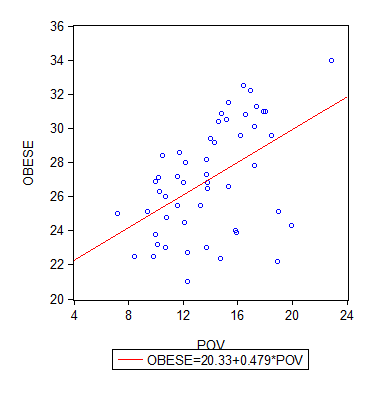A few weeks ago I was called upon to debate the idea of taxing big, high calorie soft drinks to help offset the high health costs of the American obesity epidemic. Since then, I been dipping a toe into this literature and finding it quite interesting. Given partisan gridlock, money in politics, and filibuster abuse, nothing's easy in public policy these days. And when you start regulating food policy, you bump into the personal freedom/responsibility issues that always loom large in our debates.
But at least in terms of the economic arguments, there's low hanging (and highly nutritious) fruit in terms of negative externalities, Pigouvian taxation, and "do no harm" legislation.
Before I get to those points, however, a quick review of some relevant facts of the case. Here's an excellent new infographic from the Institute of Medicine. While there's predictable controversy over what to do about this, there's little disagreement over a) the facts, and b) their negative implications for both health and the costs to society (see also this fact sheet from the CDC). Policy-wise, this gives this epidemic a leg-up over, say, global warming, where we still have to argue the science with deniers.
- 1/3 of kids and 2/3 of adults are overweight or obese (in each case, about half of those shares are obese, so about 1/3 of adults are obese and about 17% of kids).
- Trends over the last decade have drifted up, mostly among men and boys.
- CDC: "No state has met the nation's goal to lower obesity prevalence to 15%. The number of states with an obesity prevalence of 30% or more has increased to 12 states in 2010. In 2009, nine states had obesity rates of 30% or more. In 2000, no state had an obesity prevalence of 30% or more."
- Obesity rates are correlated with income, poverty, and education level but that's not the whole story -- there's variation within all those groups. The figure at the end of this post shows the correlation between obesity and poverty rates by state -- the regression line is significant and has a slope of about 0.5, implying a one-percentage point increase in poverty is associated with about a half-a-point higher obesity rates, but the poverty variable by itself only explains about a quarter of the variation across the states. By the way, the outlier there in upper right-hand corner is Mississippi.
Now, to the economics.
Here at On The Economy, we're a bit obsessed with externalties and that's what makes this obesity/overweight problem such a compelling area of inquiry. The weight epidemic generates very significant and widespread costs that spillover to the rest of society. About 20% of health spending is on related problems, and they tend to be chronic, like hypertension and type-2 diabetes -- and in our health care system, chronic = expensive.
There's also lost productivity at work along with lots of other less recognizable costs (air travel actually costs more now because heavier flight loads!).
So, as long as everyone's paying the price -- through higher health insurance premiums and taxes to support the public side of the health system -- there's an undeniable rationale for corrective public policy. The question is, what's the best policy response?
I see two venues here, call them micro and macro.
On the micro side, a Pigouvian tax is a tax on an activity that causes a negative externality, like taxing a polluter. In prepping for my soft drinks debate, I found this brief by a couple of my CBPP colleagues very helpful. The line of argument goes like this:
- The increased caloric content of sugary drinks has contributed to the epidemic;
- The epidemic is a significant contributor to the increase in health costs;
- There's a large price elasticity in play here.
This last point is the crucial one from the policy perspective. According the brief, a 10% increase in cost will reduce consumption by about 8%. Now, that's but one study but there have been others with similar findings, and the tobacco literature also supports this response. Thankfully, consumers of big, fat soft drinks are pretty price sensitive.
I would strongly advocate that any proceeds from such a tax be used for health care, overweight prevention programs, and my personal favorite policy idea in this area: provision of active, fun, safe, and very cool play spaces for kids, with a big emphasis on places where such play spaces don't currently exist. There's good research, by the way, correlating the location of such spaces to lower obesity rates among kids.*
My advocacy for using the tax revenue in these ways is also based on making a simple, common-sense connection between the epidemic, the tax, and the solution. I believe there would be a lot more support for placing a tax on stuff that's partially responsible for this problem if we're using the proceeds to fix the problem, particularly if we do so in a way that improves neighborhoods.
On the macro side, there's this interesting interview I stumbled on the other day. This scientist who studies the epidemic is asked what, according to his research, caused it:
The epidemic was caused by the overproduction of food in the United States.
Beginning in the 1970s, there was a change in national agricultural policy. Instead of the government paying farmers not to engage in full production, as was the practice, they were encouraged to grow as much food as they could. At the same time, technological changes and the "green revolution" made our farms much more productive. The price of food plummeted, while the number of calories available to the average American grew by about 1,000 a day.
Well, what do people do when there is extra food around? They eat it! This, of course, is a tremendously controversial idea. However, the model shows that increase in food more than explains the increase in weight.
Of course, here again, there's a lot more to it. It's not just food production, it's the type of food, its fat and sugar content in particular, and the fact that the cost structure very much supports cheap, unhealthy calories relative to the stuff that's much better for us.
But it's hard to imagine we'll solve our weight epidemic until we deal with the fact that public policy is subsidizing the production of the food that's causing it. We can have good arguments about whether should implement measures like new Pigouvian taxes that would help solve obesity -- we shouldn't have to argue to hard about getting rid of the wasteful, harmful spending that's making it worse.
Finally, what about personal responsibility? That's the conservative response to all of this -- the idea that your weight is your problem and not an issue for the public policy.
I understand the impulse here -- the idea that no one wants the government getting involved in the menu. But that's where the externality comes in. As long as something like this is solely a problem in the personal realm, where prices fully reflect the risk factors, then I'd agree -- government stay out! The minute it becomes a cost to the rest of us, that argument is toast (whole-wheat toast, in this case). Those massive soft drinks are socially underpriced, and that's a problem for all of us.
In this regard, there's another policy idea that is increasingly bandied about here: the idea that we can "internalize the externality" by simply charging overweight individuals themselves for the costs they're imposing on the rest of us. For example, you could ratchet up insurance costs for overweight people, or provide insurance discounts for those engaging in weight loss activities.
A lot of this latter stuff goes on already and there's more to come in the Affordable Care Act -- I'll post on it soon. But there are problems here -- what about low-income, overweight people who can't afford the higher premiums? What about the uninsured? I'm all for an "all-of-the-above" approach to solving the obesity epidemic, and these targeted ideas should be part of it, but they won't work by themselves.
More to come as I continue to delve into this research, including info on some neat local programs that are helping. But the larger point is that, assuming we someday get back to making useful national policy, here's an area where we could make a big positive difference both to people's lives and to society's balance sheet.
Obesity and Poverty Rates, by State, 2010

Sources: Poverty Rates, Census Bureau (avg for 2009-10); State Obesity Rates, CDC
*By the way, here's a particularly cool addition to a playscape, one they added a few years ago to a playground up the street from me (but you need to have a soft area underneath, for obvious reasons):

This post originally appeared at Jared Bernstein's On The Economy blog.
